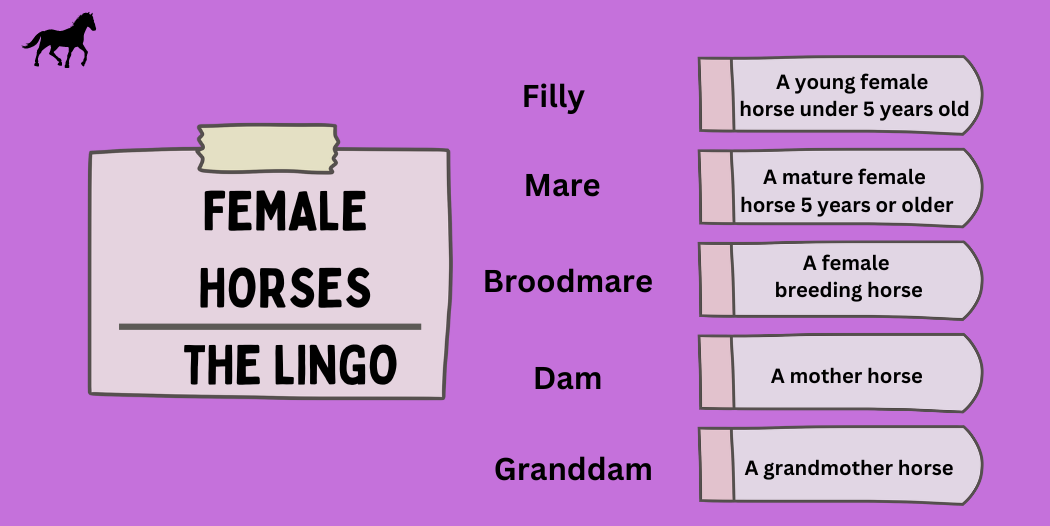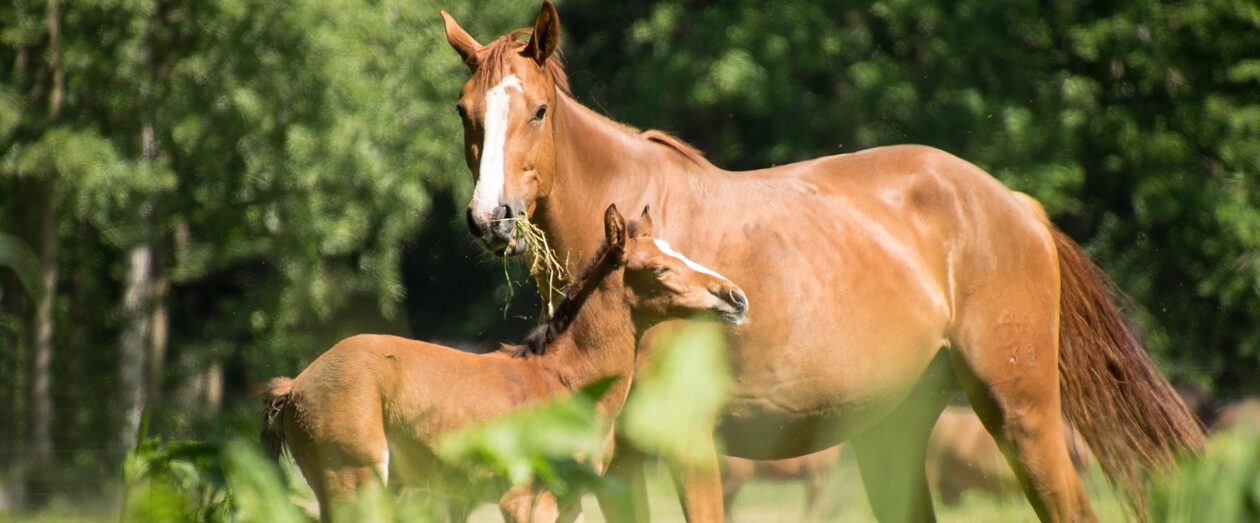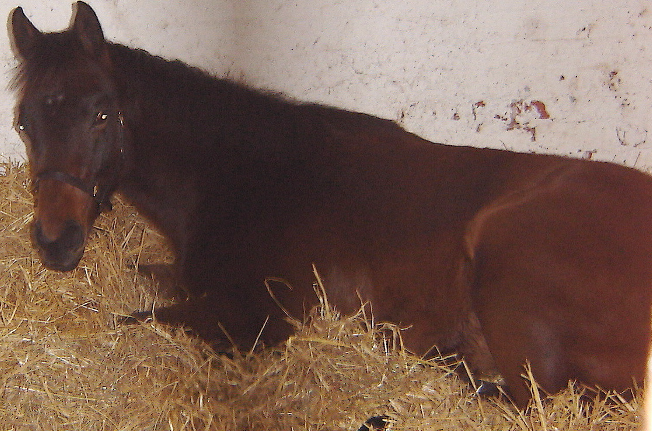It’s Not Their Ladies’ Day
‘Ladies’ Days’ are events across the racing calendar, with roots tracing back to the 19th century. Nowadays, these events are seen as opportunities for women to gather with their friends, enjoy a ‘day out’ and ‘dress to impress’.
Hidden from view, is the immense and ongoing suffering that horses endure for ‘Ladies’ Days’ to exist. This includes the thousands of female horses who are exploited in the name of ‘entertainment’ and profit each year.

The issues
On-course injuries and deaths
Female horses from the racing industry will typically lead lives of gruelling demand and exploitation. Female horses start to race from just two or three-years-old (the famous ‘Epsom Oaks Race’ is for three-year-old fillies). Racing is inherently dangerous; racing injuries that kill horses include heart attacks, broken legs, and broken necks. Around 200 horses die on British racecourses each year.
Female horses tend to have shorter careers than males. When our Horseracing Consultant looked at a cross section of 400 horses, he found that the average number of years a female race horse was in training and racing was just two. Castrated male horses (geldings) fared little better with three years racing. After that time their fate was down to luck as to their future. The lack of planned provision for thousands of horses is a damning indictment of poor welfare aftercare by the industry.

A mare and her foal
The life of a mother horse
Horses who have performed well may go on to become broodmares. Although, some horses who become broodmares will have never raced, but are chosen because their bloodlines are seen as ‘desirable’.
Mother horses are often doomed to a life of near constant pregnancy and giving birth. To control and speed up reproduction, breeding females are often subjected to drugs and prolonged periods of artificial light (to trick their bodies into thinking it is Spring).
To impregnate the female horse, a ‘teaser’ horse will assess (by smelling) whether she is going to be ‘receptive’ or not. If she is, the stallion will be led in to mate with the mare. Stallions are also used and abused by the racing industry. You can find out more here.
Many mother horses will be impregnated into their twenties, and face health complications. A recent study showed that inbreeding of thoroughbred horses – which is done to maximise a ‘preferable bloodline’ – contributes to mid and late term pregnancy loss.

A yearling separated from their mum, waiting to be sold
Sold from person to person
Each year in Britain alone, thousands of foals will be sent to ‘Yearling Sales’ – some before they are even 1 year old. Here, buyers will purchase young horses who show ‘promise’, in the hope of making lots of money in the future when they can be raced (or sold on again to someone who will race them).
The bond between mothers and foals is routinely broken in the racing industry. In feral herds, foals would stay with their mothers for approximately 1.5-3 years, but this is much shorter in the racing industry. Additionally, race horse foals are ‘creep-fed’ to wean them off their mother’s milk earlier than they would naturally. The artificial weaning process is notoriously distressing for both mother and baby.
Many horses will be sold multiple times in their lifetime, leading to an uncertain future and the risk of a premature death.
Slaughter
What happens to many race horses, including those used for breeding, once they are deemed no longer ‘of use’ to the industry, remains somewhat of a mystery.
We know, from a Freedom of Information Request to the Food Standards Agency, that 175 horses from the racing industry were sent to slaughter in England in 2023. We also know that 1,428 horses from the racing industry were sent to slaughter in Ireland in 2023, as stated by the Irish Minister for Agriculture, Food and The Marine following a question by Paul Murphy TD.
The mass speculative breeding of race horses across Britain and Ireland is a disturbing welfare issue. Many horses will never ‘make it’ as a race horse and will be disposed of. Even the ones who do win their owners thousands of pounds worth of prize money on a race course are vulnerable once no longer winning. These beautiful, sensitive animals are treated as nothing more than commodities to be discarded once no longer judged as valuable. Every single animal’s life is valuable, regardless of how humans perceive them. The treatment of horses by the racing industry is a disgrace.
Exploitation of the female animal
From dairy cows, to egg-laying chickens, to mares and fillies – female animals are exploited across industries.
Take action
Never attend a race meet, or bet on a race horse. Celebrate time with your loved ones which is kind and fun for all!
– Order horse racing leaflets by e-mailing nina@animalaid.org.uk or a Horse Action Pack
– Share our social media posts
– Read more about why the horse racing industry is cruel here